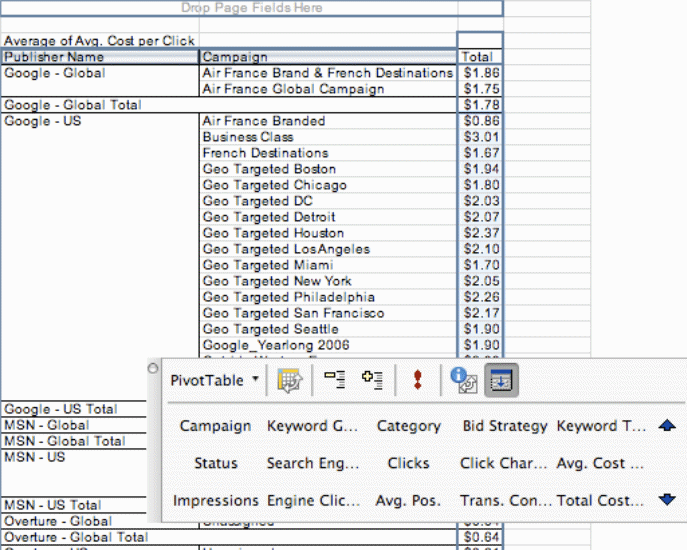Transformation of the Travel Industry by Internet
Often referred to interchangeably with terms like e-Marketing, online marketing communication within the travel industry has increasingly focused on the advertising potential of social media networking. Social media has played a central part in the liberalization of communication across the travel industry, especially in France.
Through the social media, exchange of information has not only become easier but also efficient. By a click of a button, an interested customer may be in a position to pass important information or make booking for air travel (Jeffery, 2007). As the world steadily embraces the use of Internet, the travel industry is not left behind (Birdsall & Johnston, 2010). The players in this industry communicate and use internet to interact with customers and promote several products and services.
Reasons for Rapid Consumer Adoption of E-Commerce for Travel
The air travel industry is manifested with emergence of mass society in terms of social interaction, that is, mass culture, mass welfare, mass consumerism, mass communication, and numerical sense of unique demands. Due to the entry of technological advancement in the world today, the internet has been the most common means of product and service intake for customers within the air travel industry (Jeffery, 2007).
Liebermann and Stashevsky (2008) state that “before an organization can acquire customers through the content on its site, it must develop marketing communication strategies to attract visitors to the website” (Liebermann & Stashevsky, 2008, p. 218). Marketing communications through the electronic medium started to take an active role in marketing activities of airline companies within France during the beginning of the last decade (Jeffery, 2007).
The promise of convenience, efficiency, and ease of use has greatly influenced consumers to adopt e-commerce for travel. Rationality in embracing e-commerce in travel is influenced by awareness of different options available in order to maximize gain from every bundle of purchases made (Jeffery, 2007). From these numerous options, the rational customer will correctly rate the best and will be in a position to pick the one with the highest level of satisfaction from the information communicated through the electronic medium. Satisfaction and positive perception are the driving forces behind the rising purchasing patterns of adoption of e-commerce in travel within the air travel industry, with reference to electronic media (Jeffery, 2007).
Media Contact and Search Engine Strategy Recommendation
From the case study, the media contracts should recommend a tailored publisher strategy since it would be more effective in maximizing return on investment as opposed to the uniform strategy. The potential of the tailored publisher strategy approach is that it will improve the visibility of the company’s products among the specifically targeted customers, who may be stratified by age, preference, and product culture. For instance, a company’s website should carry out a customized link reference promotion where the website visitor is able to access customized services that are stratified (Jeffery, 2007).
Structuring Future SEM Campaigns
There is an opportunity to optimize search advertising with meta-search companies such as Kayak besides the renowned companies such as Google, Microsoft, and Yahoo. This is because Kayak offers customized travel services as its main product and has wide online network (Jeffery, 2007). Since a company should optimize its search engine to improve on its online brand visibility, structuring future SEM can be achieved through installing ‘plugins’ that possess extra features such as page navigation and thumbnail that are unique and recognizable by travelers. Specifically, this proposed system may consist of a multi-tab page that will serve different areas and services to online customers (Jeffery, 2007).
In order to increase credibility and maintain professionalism, the current bomb internet channels used in SEM campaigns for reaching the consumers should be tailored to encompass processes and features that flawlessly facilitate a healthy and lifetime relationship between the centre and its clients. The SEM campaigns may be tailored to include a unique cookie which is transferable to the visitors of a product or service website (Jeffery, 2007). The unique cookie for the website will be transferred to all primary and secondary visitors of a site hence broadening the spread information on that website. Optimizing the SEM has the potential of creating a long term loyalty among clients. Basically, this arrangement will restore user confidence besides making the services available just by a click of a button (Jeffery, 2007).
Properly modified website through search engine optimization will reassure the customers on the quality of travel services being marketed online. Through proper customization of the SEM, a company will not only benefit from an increased traffic of online compliments, but also record high rates of customer loyalty as most customers are influenced by reactions from other clients. Customer retention strategy is meant to position a company as a market leader in terms of customer satisfaction tracking and response (Jeffery, 2007).

Conclusion
Apparently, e-commerce marketing is very essential, especially for the Air France Company since it operates in the competitive air travel industry. At present, most of the targeted customers have smartphones, computers, and tablets, hence easy access to the internet. The SEO and link referral are the most appropriate social media marketing strategies for the company in attracting the customer segments. When implementing SEO, it is necessary to revise the algorithms constantly for the search result of the product being marketed to remain at the top. This can be achieved through revising the content to ensure that all the information in the website pertains directly to the needs of potential clients. There is need to embrace tailored search engine marketing to ensure that the target market is stratified within the products and services of the Air France Company.
References
Birdsall, C., & Johnston, N. (2010). Achieving brand-driven business success. Design Management Review, 19(2), 67-74.
Jeffery, M. (2007). Air France internet marketing: optimizing Google, Yahoo, MSN, and Kayak sponsored search. Web..
Liebermann, Y., & Stashevsky, S. (2008). Perceived Risks as Barriers to Internet and e- commerce Usage. Qualitative Market Research 5(4), 291-300.